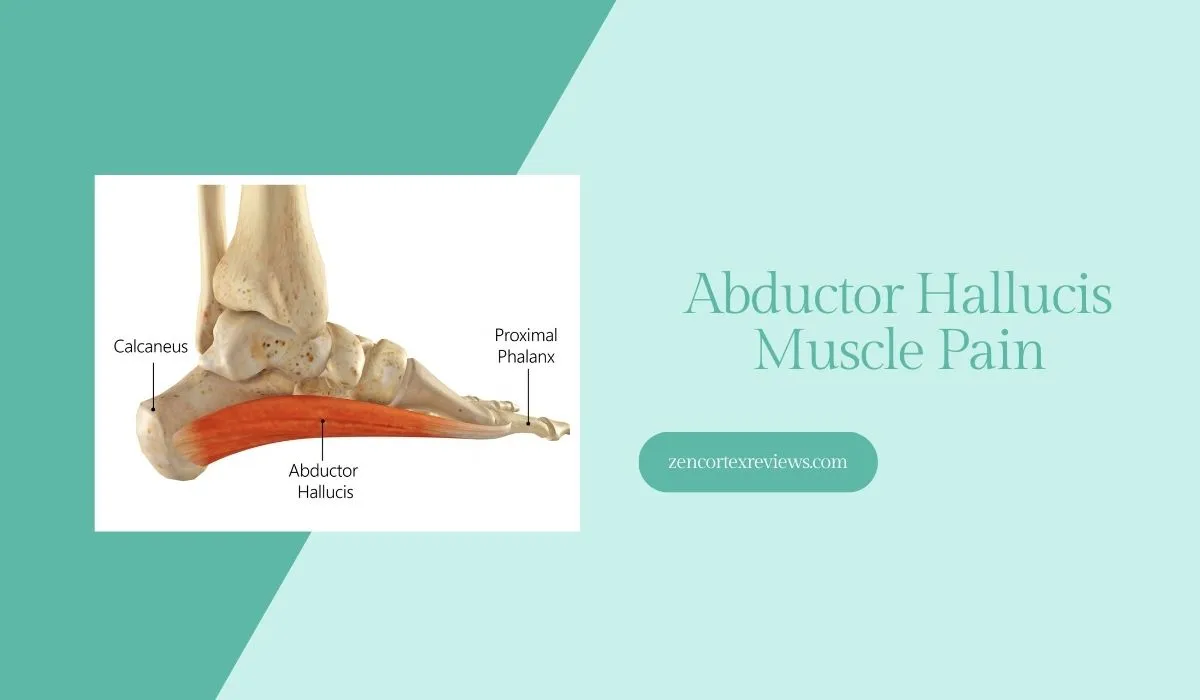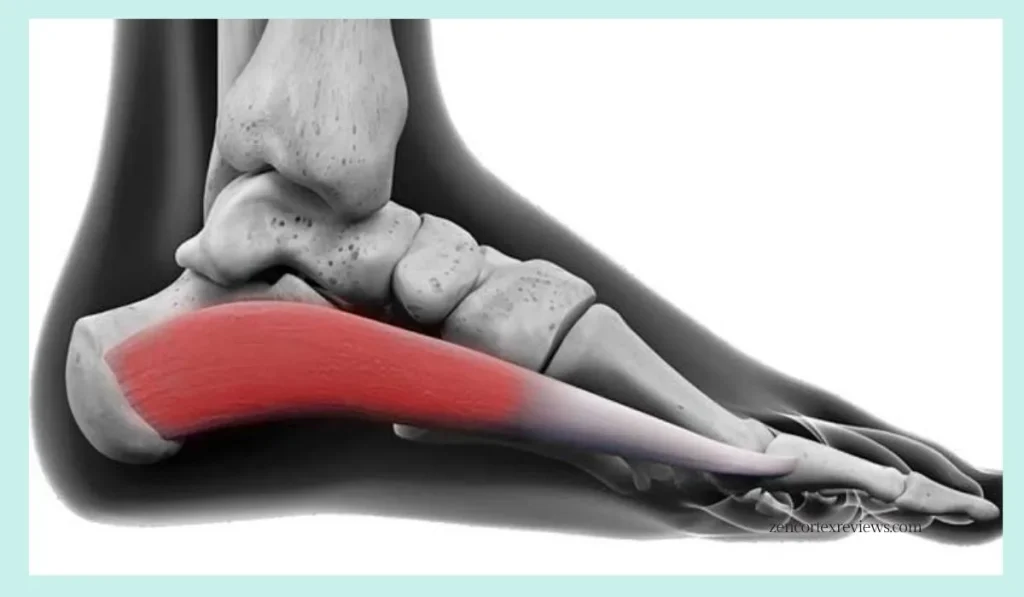Understanding Abductor Hallucis Muscle Pain: A Comprehensive Guide
Pain in the inner foot near the big toe? It could be abductor hallucis muscle strain. This guide explores causes like overuse, trauma, and foot issues, symptoms, treatments like rest and therapy, and prevention strategies for this mobility-limiting condition.

Disclaimer: Our recommendations are sincere, driven by the products’ benefits. When you buy through our links, we may earn a commission, backing our testing and development at no extra cost to you.
The abductor hallucis muscle, located in the foot, plays a crucial role in enabling proper gait and balance. However, when this muscle becomes strained or injured, it can lead to a condition known as abductor hallucis muscle pain, which can significantly impact an individual’s mobility and quality of life. In this article, we’ll explore the causes, symptoms, and treatment options for abductor hallucis muscle pain, as well as strategies for prevention and management.
Anatomy of the Abductor Hallucis Muscle

Before delving into the causes and treatment of abductor muscle pain, it’s essential to understand the anatomy and function of this muscle. The abductor hallucis muscle is located in the medial (inner) side of the foot, near the big toe. Its primary function is to abduct (move away from the midline) and flex (bend) the big toe, which is crucial for maintaining proper balance and foot mechanics during walking and other activities.
Causes of Abductor Hallucis Muscle Pain
Abductor muscle pain can arise from various underlying conditions or injuries, including:
- Overuse or Repetitive Strain Repetitive motions or activities that involve excessive stress on the abductor hallucis muscle, such as long-distance running, hiking, or sports that require frequent pushing off or pivoting, can lead to muscle strain and pain.
- Direct Trauma or Injury An acute injury to the foot, such as a fall, impact, or sudden twisting motion, can cause direct trauma to the abductor hallucis muscle, resulting in pain, swelling, and potential muscle tears or strains.
- Foot Deformities or Structural Abnormalities Conditions like bunions, hammertoes, or other foot deformities can alter the biomechanics of the foot, placing excessive strain on the abductor hallucis muscle and leading to pain and discomfort.
- Plantar Fasciitis Plantar fasciitis, a common condition characterized by inflammation of the plantar fascia (the connective tissue that runs along the bottom of the foot), can also lead to abductor muscle pain due to the close anatomical relationship between these structures.
- Poor Footwear Wearing ill-fitting or unsupportive shoes, particularly those with insufficient arch support or cushioning, can contribute to abductor hallucis muscle strain and pain over time.
Symptoms of Abductor Hallucis Muscle Pain
The primary symptom of abductor muscle pain is, as the name suggests, pain or discomfort in the inner side of the foot, near the big toe. Other symptoms may include:
- Swelling or tenderness in the affected area
- Difficulty walking or bearing weight on the affected foot
- Stiffness or limited range of motion in the big toe
- Bruising or discoloration in severe cases
In some instances, individuals may experience referred pain or discomfort in other areas of the foot or leg due to the interconnected nature of the muscles and tendons.
Diagnosis and Treatment
If you experience persistent or severe abductor hallucis muscle pain, it’s essential to consult a healthcare professional, such as a podiatrist or orthopedist, for proper diagnosis and treatment. The diagnostic process may involve:
- Physical Examination: The healthcare provider will assess the foot, check for swelling, tenderness, and range of motion.
- Imaging Tests: X-rays, MRI scans, or ultrasounds may be ordered to rule out fractures, bone spurs, or other structural abnormalities.
- Gait Analysis: Observing the patient’s walking pattern can help identify biomechanical issues contributing to the pain.
Treatment options for Abductor Hallucis
Muscle pain may vary depending on the severity and cause of the condition, but they often include:
- Rest and Activity Modification Resting the affected foot and avoiding activities that exacerbate the pain can help reduce inflammation and promote healing.
- Cold Therapy Applying ice packs or cold compresses to the affected area can help reduce swelling and alleviate pain.
- Medications Over-the-counter anti-inflammatory medications, such as ibuprofen or naproxen, can help reduce inflammation and relieve pain.
- Foot Support and Orthotics Wearing proper supportive footwear or using custom orthotics can help correct biomechanical issues and redistribute pressure, reducing strain on the abductor hallucis muscle.
- Physical Therapy A physical therapist can design a personalized rehabilitation program that includes exercises, stretches, and manual therapy techniques to improve strength, flexibility, and range of motion in the affected foot and lower extremity.
- Corticosteroid Injections In severe or persistent cases, a corticosteroid injection into the affected area can help reduce inflammation and alleviate pain.
- Surgery In rare cases, surgical intervention may be recommended to address underlying structural issues or release entrapped nerves or tendons contributing to the abductor hallucis muscle pain.
Prevention and Self-Care
While some causes of abductor hallucis muscle pain may be unavoidable, there are several preventive measures and self-care strategies that can help reduce the risk of developing this condition or prevent it from worsening:
- Proper Footwear Wearing well-fitted, supportive shoes with adequate cushioning and arch support can help reduce strain on the abductor hallucis muscle and promote proper foot mechanics.
- Stretching and Strengthening Exercises Incorporating regular stretching and strengthening exercises for the feet, calves, and lower extremities can help improve flexibility and support the abductor hallucis muscle.
- Gradual Increase in Activity If starting a new exercise regimen or increasing activity levels, it’s essential to do so gradually to allow the body, including the abductor hallucis muscle, to adapt and avoid overuse injuries.
- Maintaining a Healthy Weight Excess weight can place additional strain on the feet and abductor hallucis muscle, increasing the risk of injury and pain.
- Proper Warm-up and Cool-down Before and after engaging in physical activities, it’s important to warm up and cool down properly to prepare the muscles and reduce the risk of strain or injury.
Related: How To Improve Hearing Without Hearing Aids: 7 Natural Strategies That Work
Conclusion
Addressing Abductor Hallucis Muscle Pain for Optimal Mobility Abductor muscle pain can significantly impact an individual’s mobility, balance, and overall quality of life. By understanding the causes, symptoms, and available treatment options, individuals can seek prompt medical attention and appropriate management strategies.
Prevention remains crucial, and adopting proper footwear, regular stretching and strengthening exercises, and gradually increasing activity levels can help reduce the risk of developing abductor hallucis muscle pain. With the right approach, individuals can effectively manage this condition and maintain optimal foot function for daily activities and physical pursuits.
Lindsay Martinez
Lindsay Martinez, Au.D., is a licensed audiologist with over 10 years of experience in the field of hearing healthcare. She earned her Doctor of Audiology degree from the University of California, Los Angeles, and currently practices at Martinez Hearing Clinic, a leading audiology practice in the San Francisco Bay Area. As an expert in diagnosing and treating a wide range of hearing disorders, Dr. Martinez specializes in fitting advanced hearing aids and assistive listening devices. She is a fellow of the American Academy of Audiology and has published numerous peer-reviewed articles on topics such as noise-induced hearing loss and the latest innovations in hearing technology. Passionate about patient education, Dr. Martinez is committed to helping her patients improve their hearing and overall quality of life.
